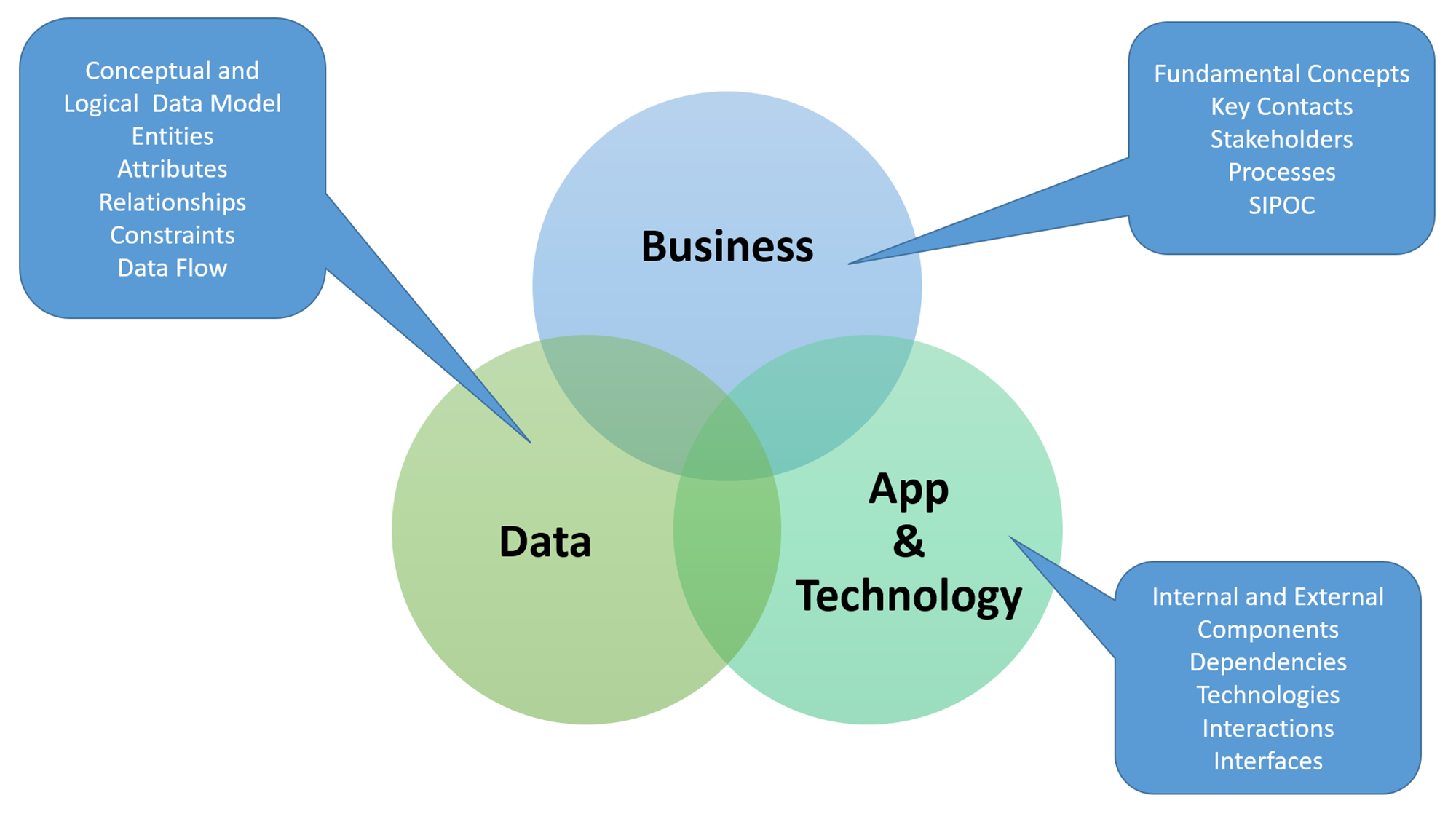Enterprise and Solutions Architecture is one of those core fields in technology that are still fuzzy enough for everyone.
In this post, I am sharing some of the knowledge I have acquired in the past 20+ years about it; landed in an adapted simplified framework: The B.D.A.T. (Business, Data, Application/Technology)
I’d like to start with a sort of unconventional definition for architecture as that thing that enables a team to discuss, talk and think about something; being that something the system, solution or problem at hand.
Architecture of something is the fundamental modeling and description of that something.
That’s how in my experience BDAT is so successful and integral way to enable teams to think about a system or solution.
Business
As stated before, BDAT stands for Business, Data, Application and Technology. It begins with a description of the business at hand, including problem definition, glossary, stakeholders, contacts, processes, inputs, outputs, suppliers, customers and all definitions that help talk and think about the solution from a subject matter perspective.
This business description is usually highly technical in the field the solution or application is about. For instance for a financial technology solution it would be deep and heavy in accounting and finance concepts such as ledgers, transactions, accounts payable and so on, while in a solution for manufacturing, it would be focused on volumes, constraints, process control, and the likes. For business descriptions we can mention the SIPOC tool (Supplier, Input, Process, Output, Customer) which is a good way to describe business and technical processes.
Data
Once the business is described, it can be used to narrow the analysis of the problem and solution in terms of data being handled. This involves the description of conceptual data models (entities and their relationships) and logical data models (entities, attributes, data types,, constraints, relationships at attribute level (foreign keys, primary keys) and flows of data and their interdependencies, including definitions of record of origin (ROO) and record of reference (ROR).
Application and Technology
This section focuses on the specific components that make up our solution, including internal components, user and applicaiton interfaces, upstream and downstream dependencies as well as technical details such limitations, execution schedules, constraints. This section also includes the description of technology used to implement each of the components, communication channels and relevant technologies used in dependencies.
BDAT enables teams and stakeholders to reason about problems and solutions from different key angles for rich ideation discussions. It provides a robust foundation even from research and exploration stage of projects, and all the way up to development execution and product lifecycle management.

References
- Basic examples of initial BDAT documentation for hardware and software solutions: